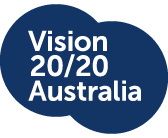In a landmark decision, the Therapeutic Goods Administration has approved use of the first ever gene therapy in Australia.
Luxturna (voretigene neparvovec) is now registered in Australia, for the treatment of patients with inherited retinal dystrophy caused by pathological biallelic RPE65 mutations, who have sufficient viable retinal cells as determined by the treating physician. Luxturna is injected under the retina and carries a functioning RPE65 gene to replace the faulty one.1
“This life-changing therapy brings hope to more than 15,000 affected Australians that treatment for all forms of inherited retinal disease may be possible”
“The availability of Luxturna for the first time provides a treatment for people with inherited retinal diseases. Luxturna is the first gene replacement therapy for blinding eye conditions and one of the first gene replacements for any human disease. This heralds a new era in transforming the lives of these people who otherwise have a life of blindness ahead of them. Although this treatment is for a rare genetic form of retinal dystrophy, this therapy will be the first of many providing hope and treatment for many people” said John Grigg, Professor and Head, Discipline of Ophthalmology, Save Sight Institute, The University of Sydney.
“This is ground-breaking news in Australia, the first eye gene therapy soon to be available for clinical use. This one is for RPE65-related retinal vision loss. It is a revolutionary change for people with genetic retinal disorders like retinitis pigmentosa, because it provides real hope for therapies for this whole group of conditions” said Robyn Jamieson, Professor of Genomic Medicine, Head, Eye Genetics Research Unit, Children’s Medical Research Institute, and Head, Discipline of Genomic Medicine, University of Sydney.
Children and adults born with a mutation in both copies of the RPE65 gene can suffer from a range of symptoms, including night blindness (nyctalopia), loss of light sensitivity, loss of peripheral vision, and loss of sharpness or clarity of vision,2 potentially progressing to total blindness.2-5 Research shows that vision impairment and blindness in children frequently cause social isolation, emotional distress, loss of independence, or hazards such as falls and injuries.6
“Inherited retinal diseases are a group of conditions that disproportionally affect children and young adults and lead to blindness. In Australia, one in every 1,500 children is born with an inherited retinal disease. The patient burden is extremely high and the impact on family and friends can also be devastating. Retina Australia welcomes the news of this new targeted gene therapy that has the potential to improve vision and prevent progression towards total blindness for people with mutations in the RPE65 gene. This life-changing therapy brings hope to more than 15,000 affected Australians that treatment for all forms of inherited retinal disease may be possible. Retina Australia looks forward to learning how patients respond to Luxturna,” said Leighton Boyd, Chairman, Retina Australia.
“Leber’s amaurosis is a devastating diagnosis for a child and their family. Gene therapy using Luxturna now offers some children with Leber’s amaurosis associated with the RPE65 gene, the opportunity to improve and retain their functional vision. This will allow the child to lead an independent life,” said Frank Martin, Clinical Professor in the Department of Paediatrics and Child Health and Ophthalmology at the University of Sydney.
“The TGA registration of the first gene therapy in Australia, Luxturna, marks a milestone in reimagining medicine and has the potential to bring real value to patients in Australia living with inherited retinal dystrophy, their families and society as a whole,” said Richard Tew, Country President, Novartis Australia and New Zealand. “At Novartis, we bring together our heritage in ophthalmology and our investment in accelerating gene therapy to deliver on our commitment to help transform eye care for patients suffering from a variety of rare ophthalmic diseases including inherited retinal dystrophy.”
The TGA decision is based on data from a Phase 1 clinical trial, its follow-up trial, and the first randomised, controlled Phase 3 gene therapy trial for an inherited disease.3 In the Phase 3 clinical trial, vision improvement was recorded as early as 30 days after treatment.3 At one year, compared with the control group, patients treated with voretigene neparvovec improved by 1.6 light levels on the binocular multi-luminance mobility test (MLMT), the trial’s novel, patient-centric, primary endpoint.3 Vision improved by one or more light levels for 90% of patients treated with voretigene neparvovec, and 65% were able to successfully navigate the MLMT at the lowest light level of one lux at one year.3
References
1. Luxturna (voretigene neparvovec) Novartis Pharmaceuticals. Australia Prescribing Information.
2. Astuti GD, et al. Comprehensive genotyping reveals RPE65 as the most frequently mutated gene in Leber congenital amaurosis in Denmark. Eur J Hum Genet 2016; 24: 1071–79.
3. Russell S, et al. Efficacy and safety of voretigene neparvovec (AAV2-hRPE65v2) in patients with RPE65- mediated inherited retinal dystrophy: a randomised, controlled, open-label, phase 3 trial. The Lancet 2017; 390:849–860.
4. Russell S, et al. Three-year update for the phase 3 voretigene neparvovec study in biallelic RPE65 mutation-associated inherited retinal disease. Investigative Opthalmology & Visual Science 2018; 59.
5. NIH U.S. National Library of Medicine (2018). Genetics Home Reference. RPE65 gene. Available at: https://ghr.nlm.nih.gov/gene/RPE65. Last accessed June 2020.
6. Banken R, et al. Voretigene neparvovec for biallelic RPE65-mediated retinal disease: Effectiveness and value, final evidence report. Institute for Clinical and Economic Review 2018. Available at https://icer-review.org/wp-content/uploads/2017/06/MWCEPAC_VORETIGENE_FINAL_EVIDENCE_REPORT_02142018.docx.pdf. Last accessed June 2020.
Article published on Mivision
